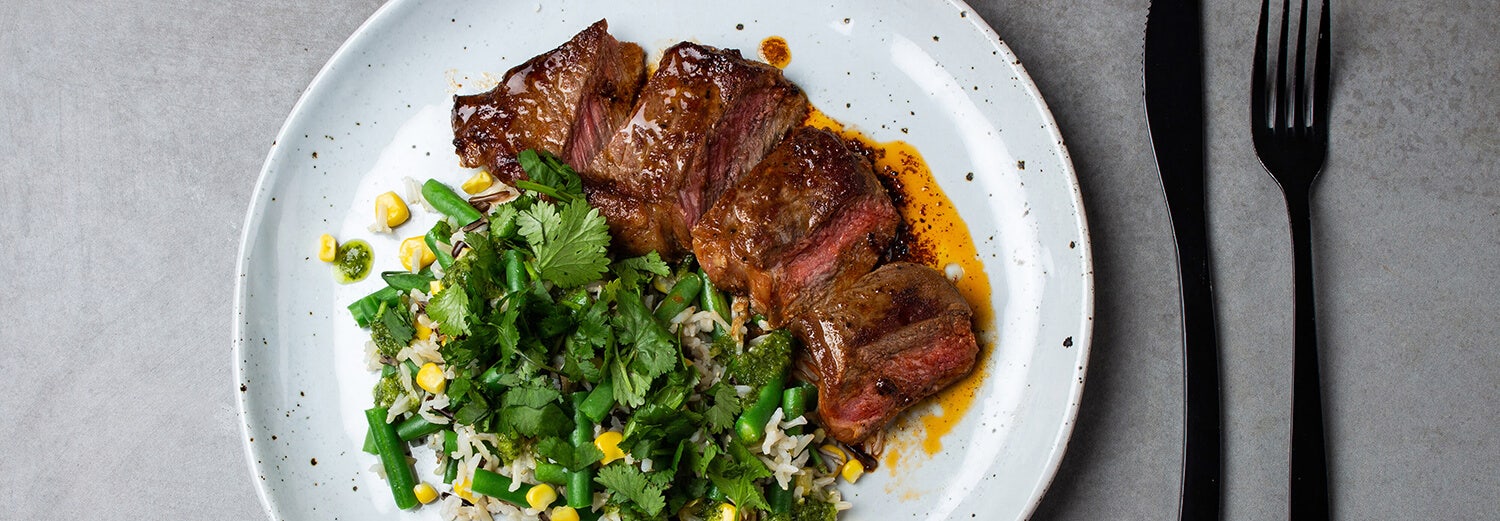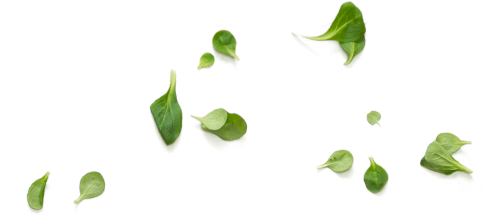

HOW TO COOK THE PERFECT STEAK IN A FRYING PAN
When you cook a steak you must begin with a good frying-pan.
There are shelves and shelves of frying pans available, all promising to make your home culinary meals restaurant-worthy, but the truth of the matter is, unless it is heavy or heavy-based you may as well toss it out with the steak you are about to ruin.
(It’s not you, it’s the frying pan.)
Heavy frying pans will heat steadily and evenly. They won’t warp after prolonged exposure to high temperatures and even though they cost a lot up front, they will literally last you a lifetime.
Just like a frying pan, not all steaks are created equal. Fortunately with steak, depending on your personal preference, a thick or thin piece can have equally satisfying results.

COOKING THINNER STEAKS
For your thinner cut of steak, heat oil in your heavy frying pan until it is hot.
Season one side of your steak well with salt. This will also help to develop a rich brown crust on your steak.
Put your steak salt side down onto the pan. There should be the gratifying sound of sizzling.
Now season the side facing you.
For a rare steak, a minute each side maximum. Medium rare, 2-3 minutes per side, medium to well done, 3-4 minutes and for a fully cooked piece of steak…..longer.
COOKING THICKER STEAKS
A thicker piece of steak obviously requires more cooking time, even if you are after a medium rare finish.
You will still need your frying pan to be hot, but at more of a medium heat.
There should still be a sizzle when you place your piece of steak down, but it will not be as dramatic.
If you pan is too hot, the outside will cook too quickly, or even burn, before the middle has a chance to cook.
RESTING THE MEAT
Finally, REST YOUR MEAT!!! This is such an important part of creating a perfect steak.
The results from letting your steak rest for about 5 minutes is worth it. The improvement in taste and texture is noticeable.
Your jaw will thank you for it.
MEAT TEMPERATURE
There is a lot of talk about taking your steak out to let it rest at room temperature before cooking.
Some swear it makes a difference to the cooking and others swear that it doesn’t.
However, it is almost nauseating to think of cooking up a piece of meat that has been left out long enough to reach the same temperature as the room you are cooking in.
A suggestion is that you take the steak out of the fridge first, and then get your pan out ready for heating. At least in that way, the chill from the meat is gone and you can be secure in knowing you won’t get food poisoning.
SEASONING THE STEAK
Steak has an amazing quality where its natural flavor is enhanced when just seasoned just with salt.
If you want to get a bit adventurous, try mixing in some herbs with your salt before putting it onto your meat, (thyme and rosemary are excellent red meat herbs) or making a quick rub by adding some spices to the salt.
There are also some great marinade recipes out there to try also, check out the New Zealand Beef and Lamb website for some great recipe ideas
Kiwi people like their personal space and so do kiwi steaks. Don’t overcrowd your pan.
The temperature of your frying pan drops slightly with each piece of meat you cook and therefore needs to recover that heat.
The meat won’t sear or brown on the outside, nor will it cook through the inside how you want it to. Chances are it will start to leach out juices and you will soon be simmering your steak rather than frying it.
And the final, final note…don’t stress! A good steak dinner is comforting and satisfying. Cooking it should be too.
Interested in giving Woop a try?
